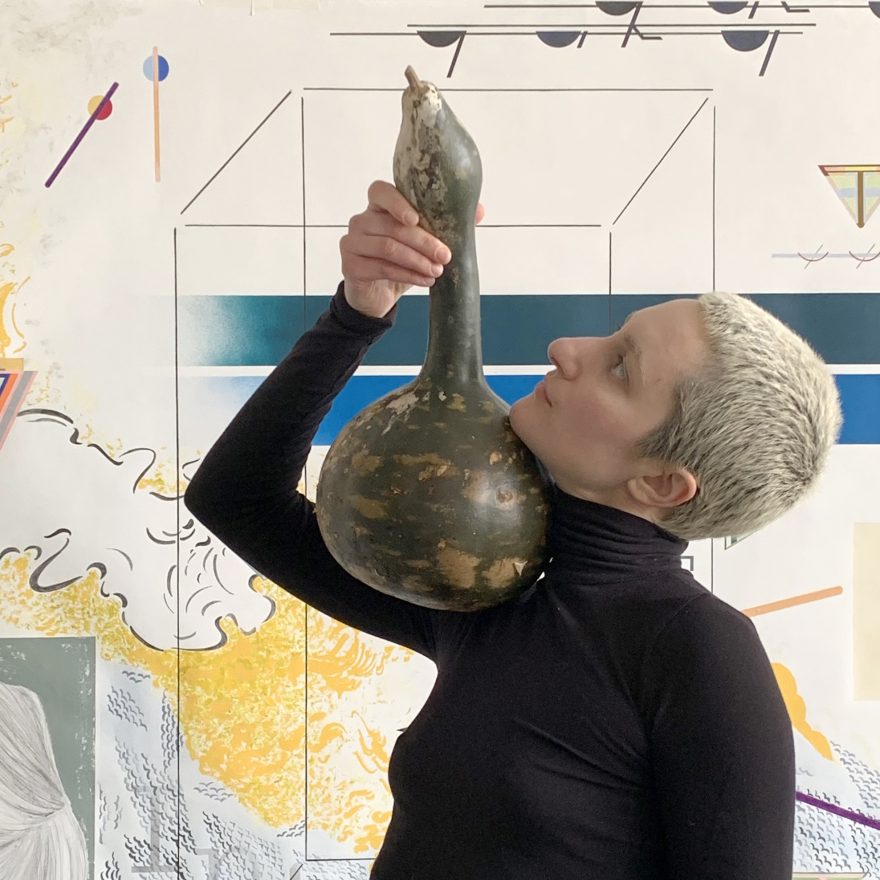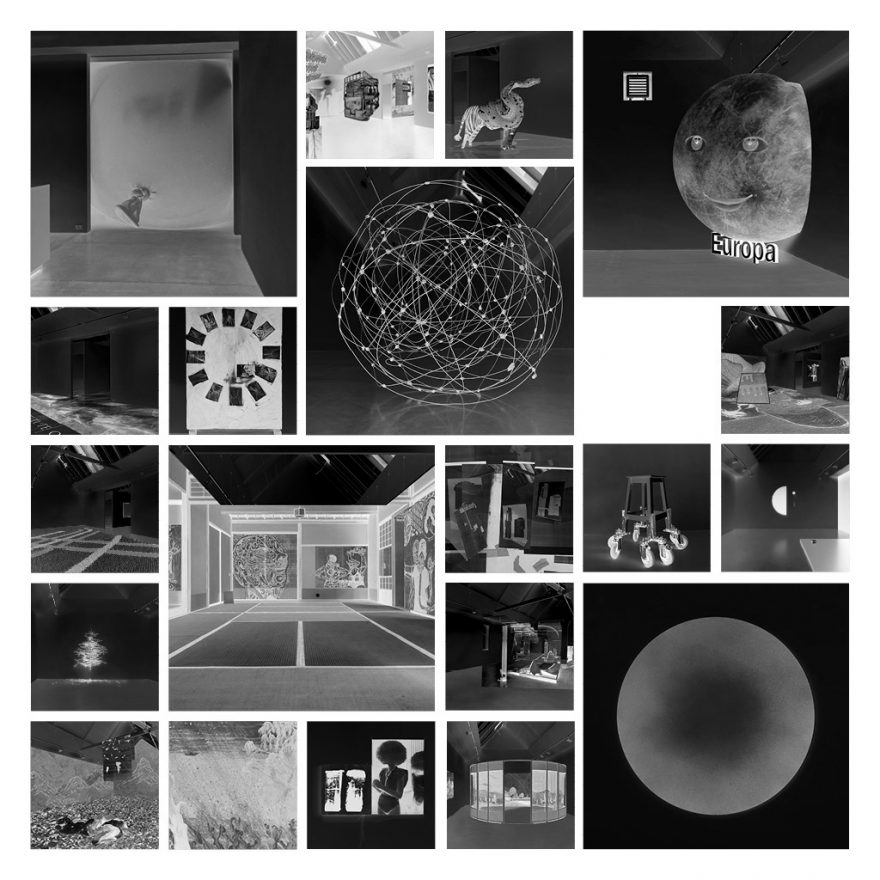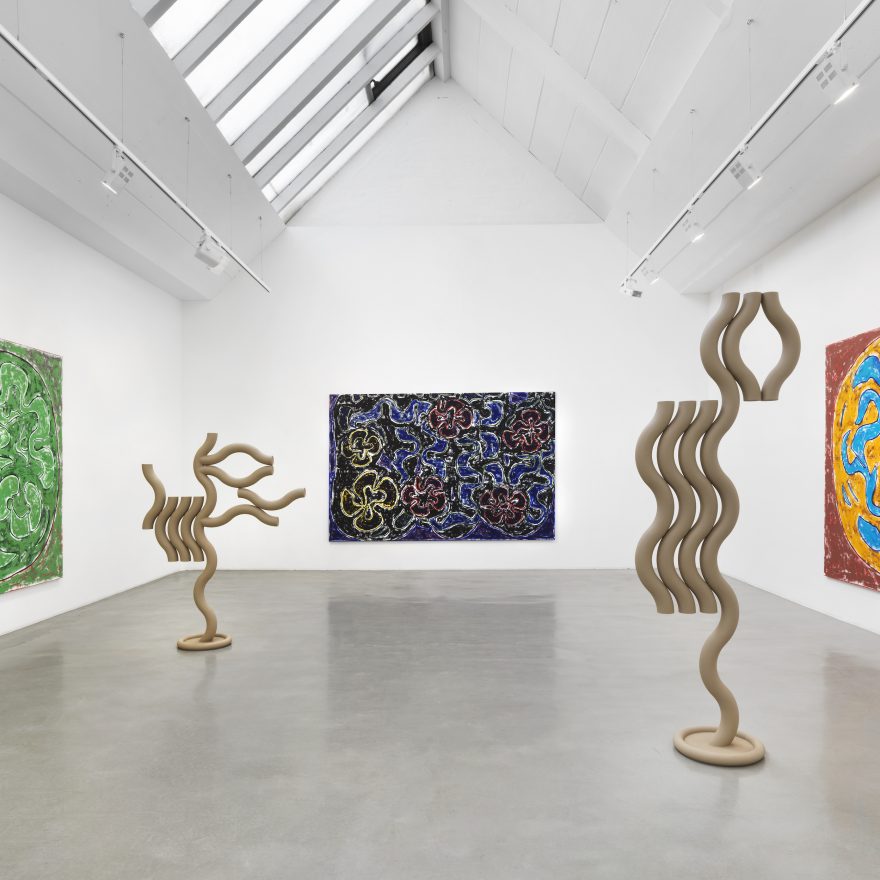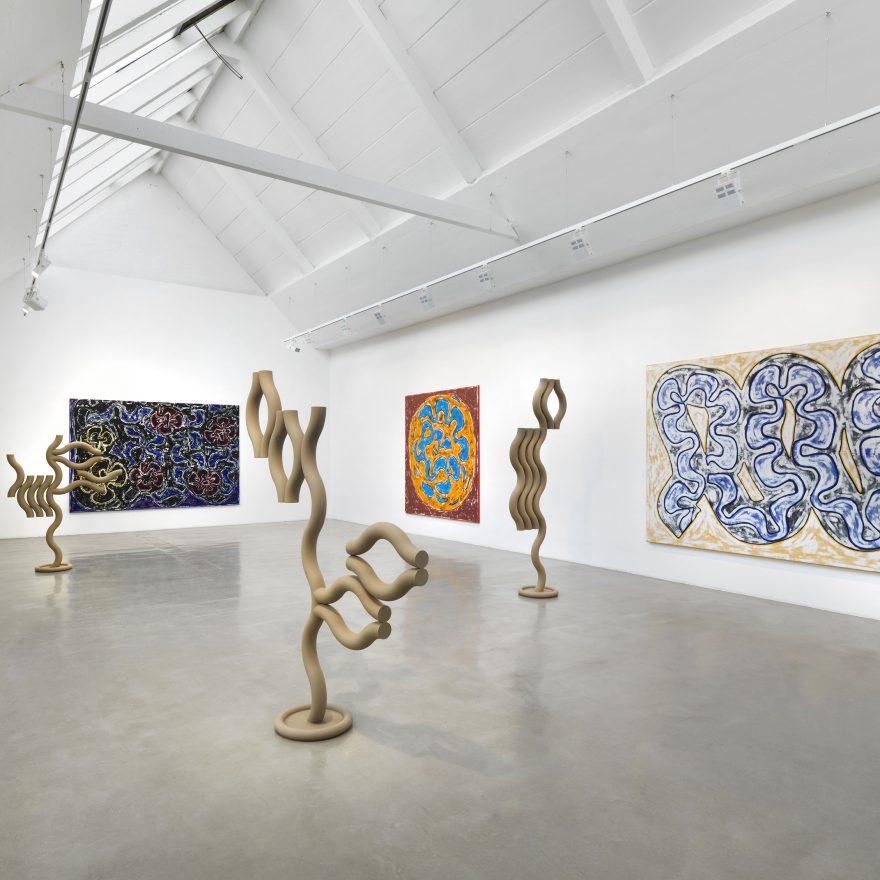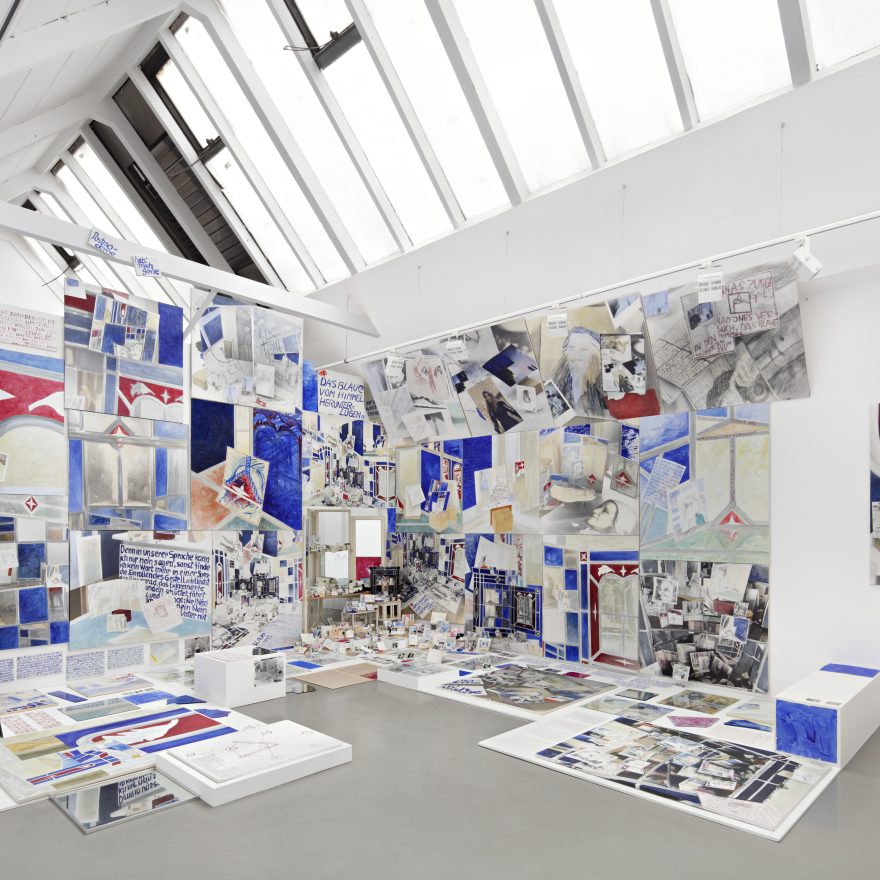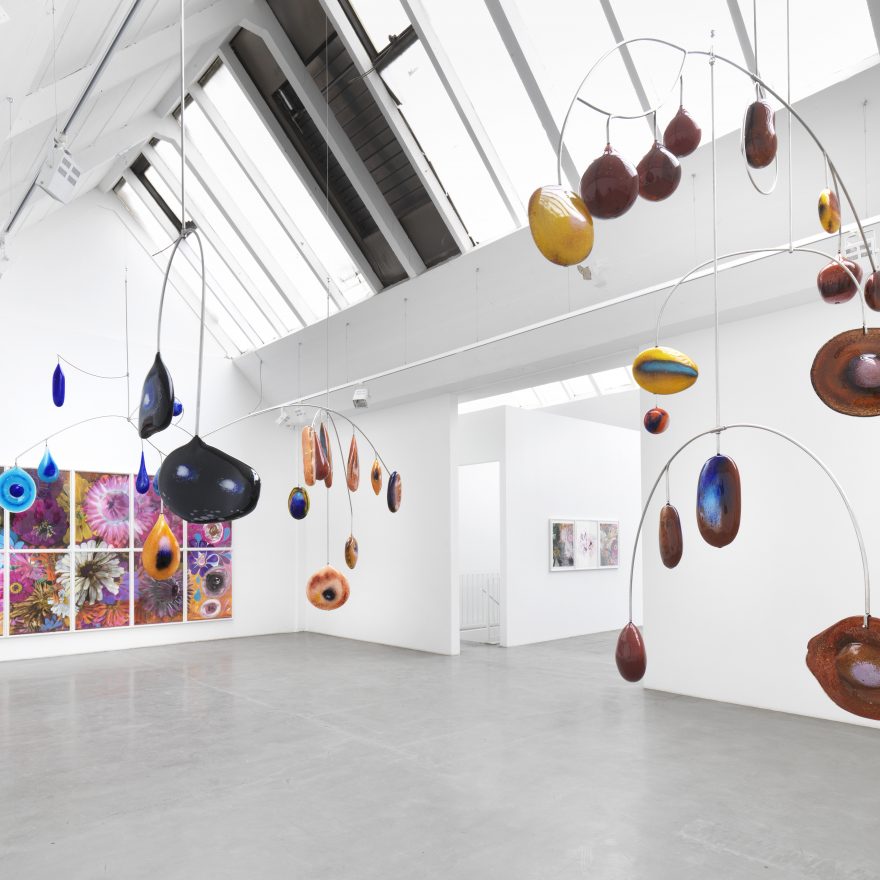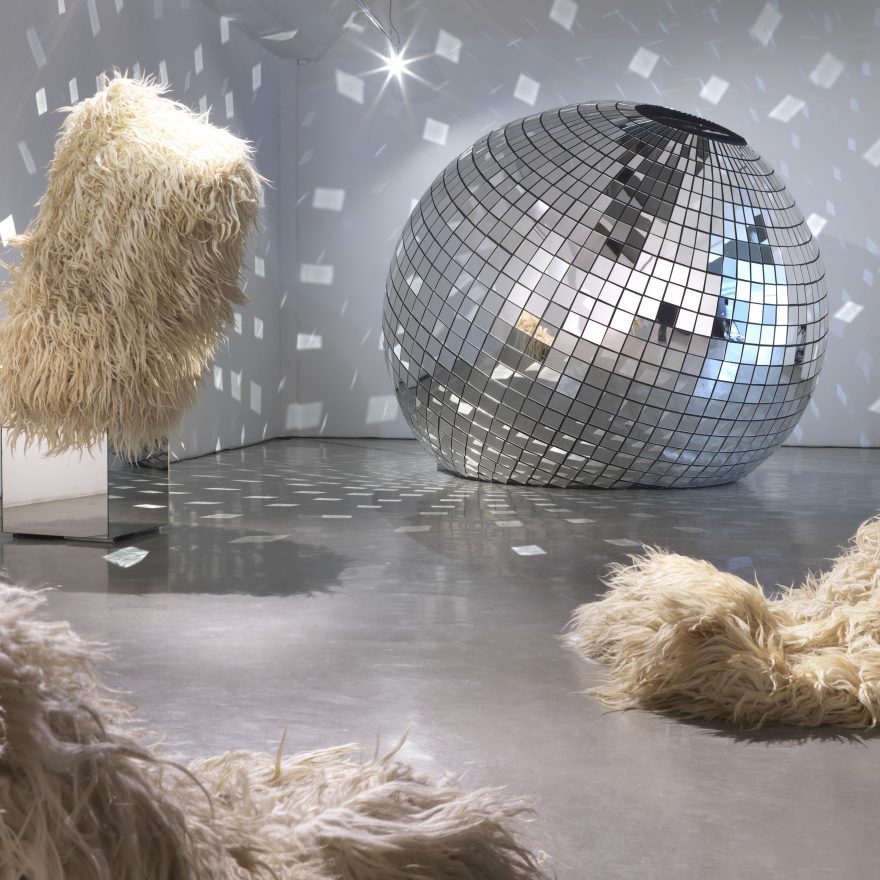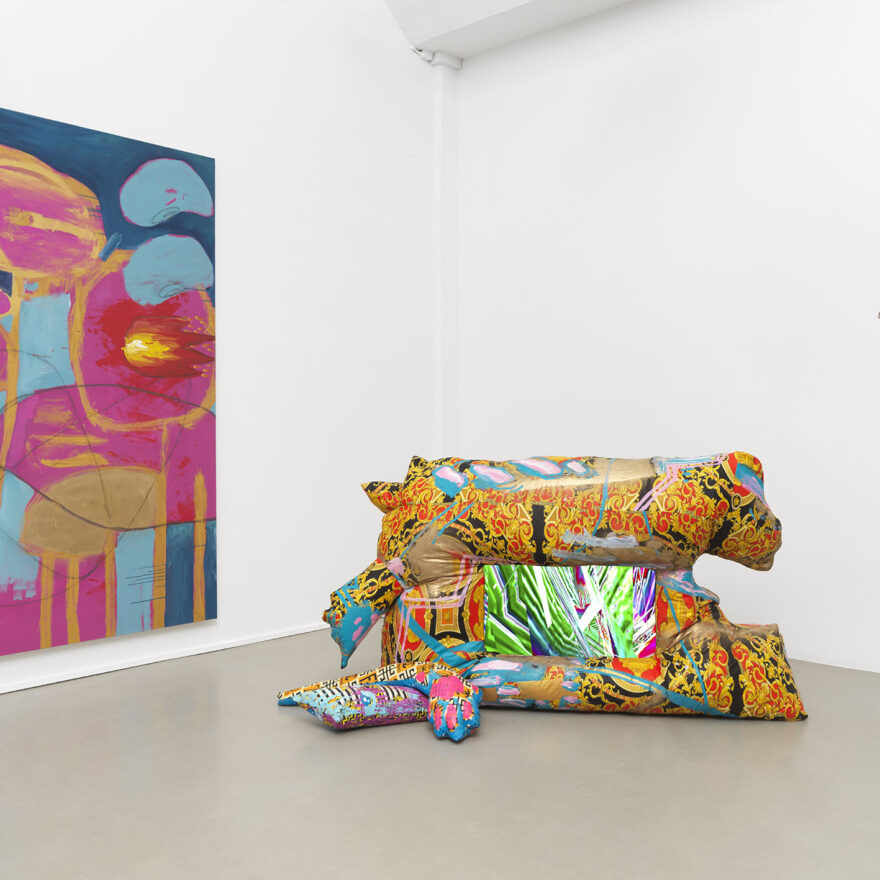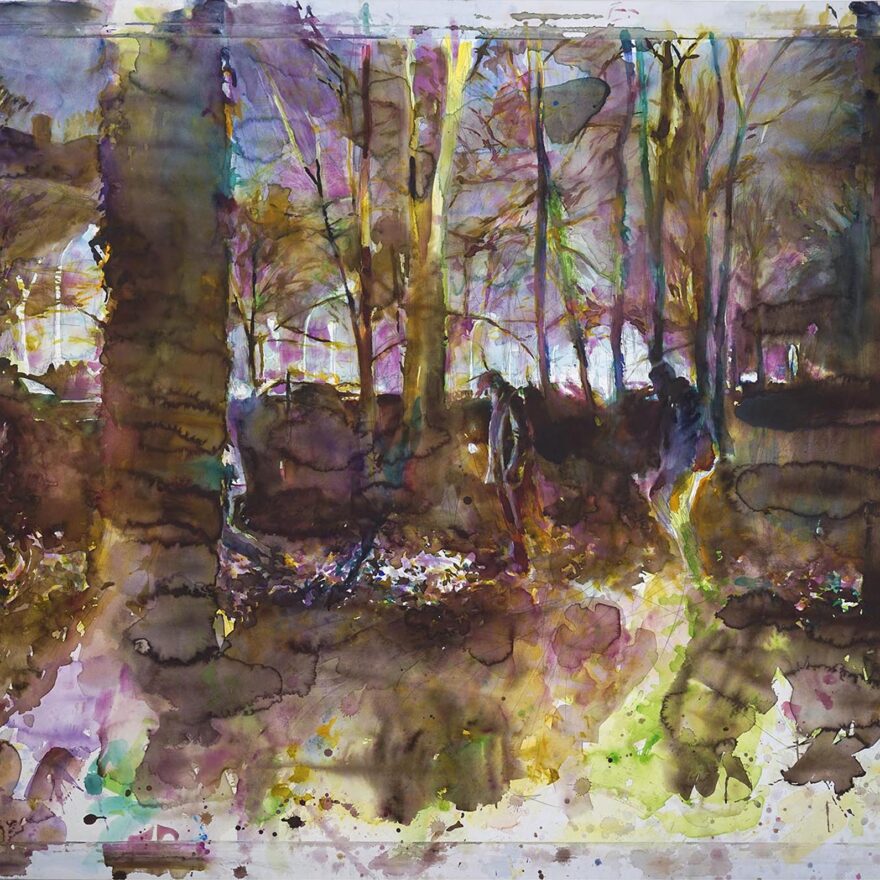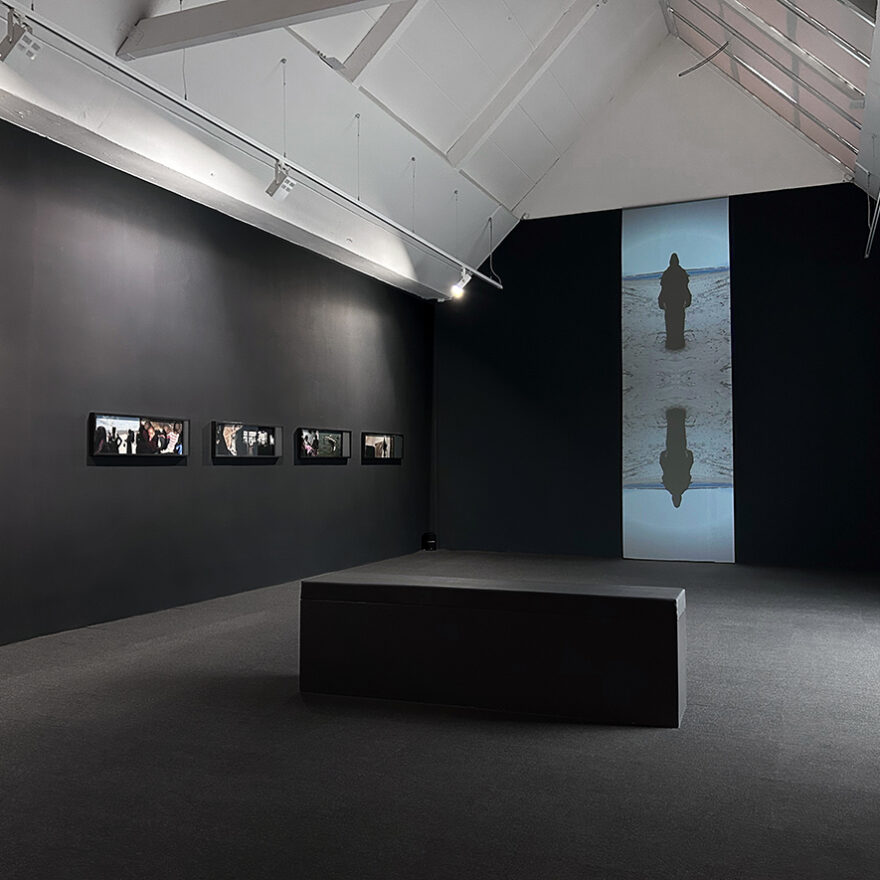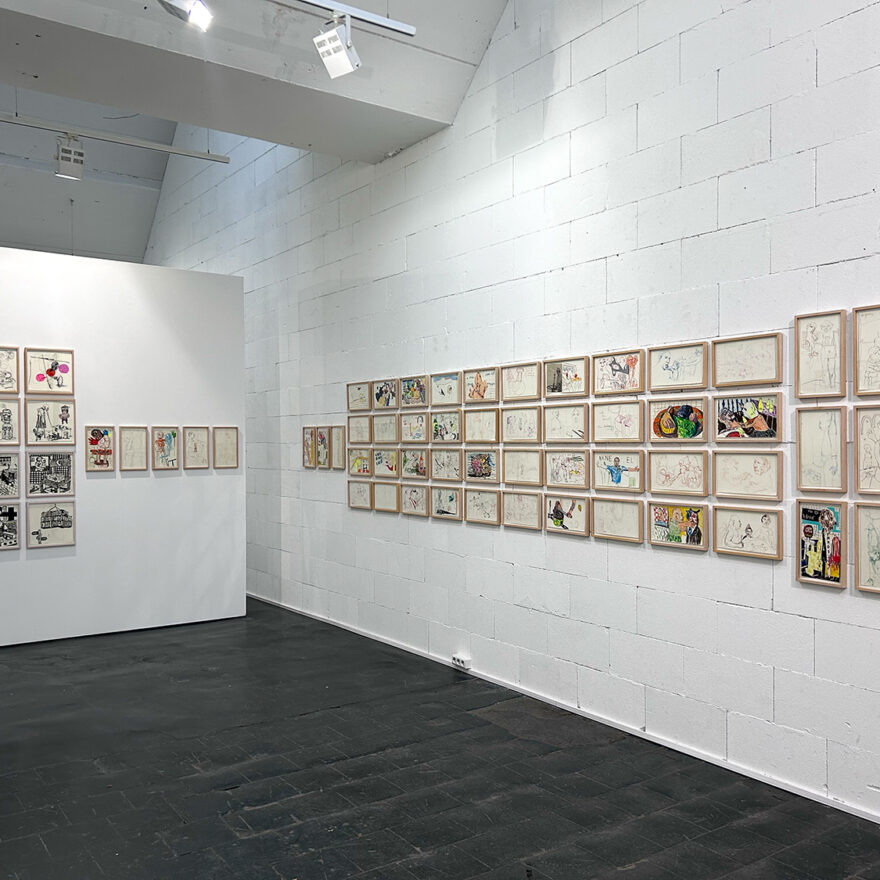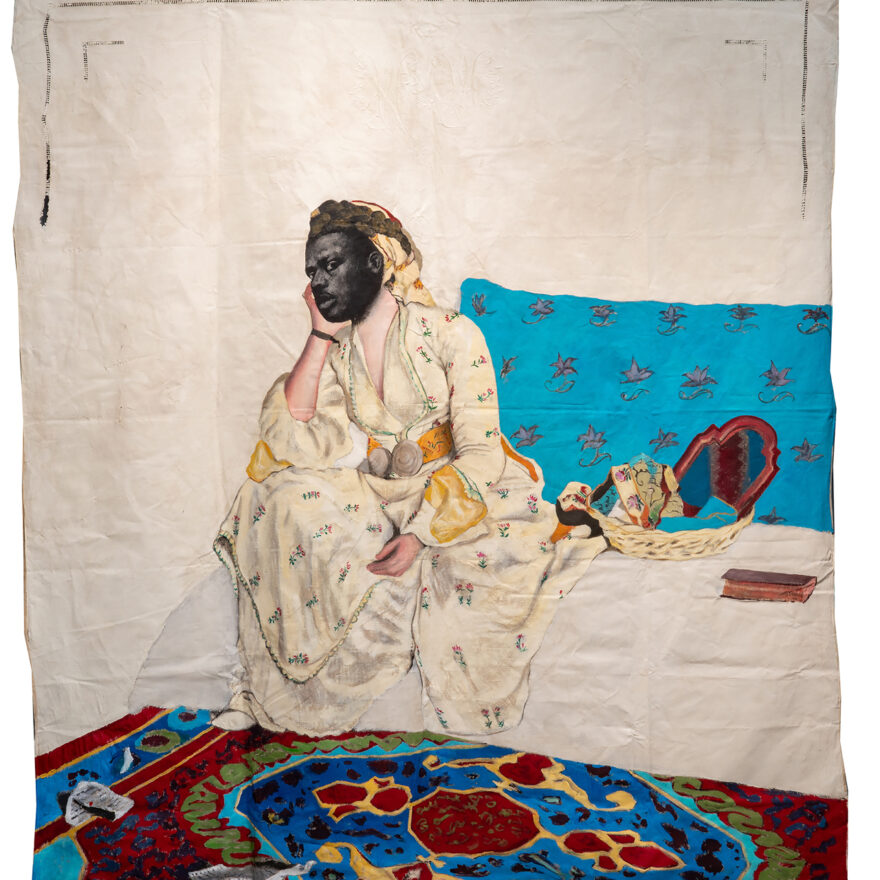Roméo Mivekannin
Spleen
2 MAY until 21 JUN 2025
Opening – 2 MAY 2025, 6-9 pm

Exhibition view
Roméo Mivekannin, Spleen 2025.
Galerie Barbara Thumm,
Courtesy of the artist and Galerie Barbara Thumm,
Photo: Olga Litetskaya
“The Orient was almost a European invention, and has been since antiquity a place of romance, exotic beings, haunting memories and landscapes, remarkable experiences.”
– Edward Said, Orientalism, 1978
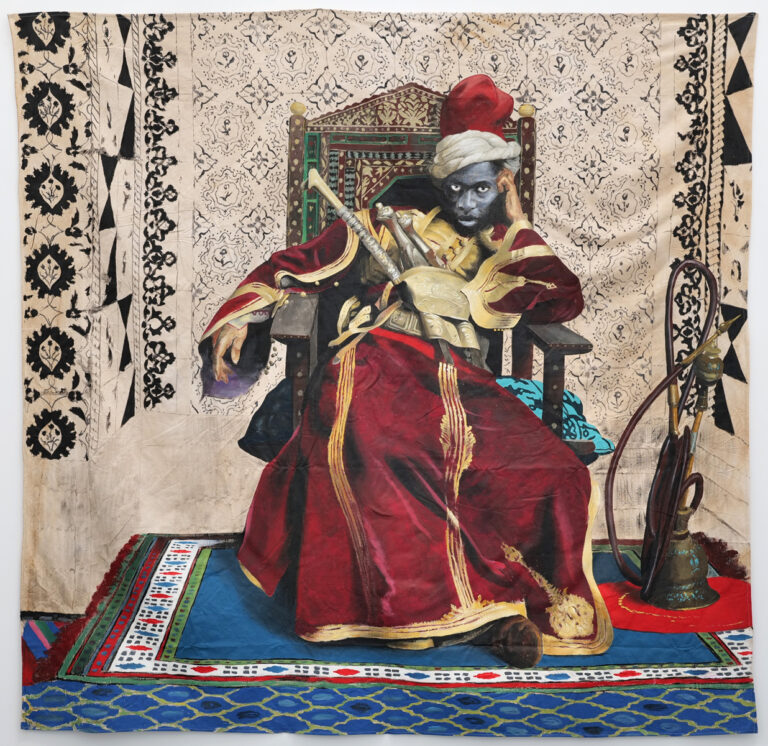
Roméo Mivekannin,
After Jean Leon Gerome, Markos Botsaris, 2025,
Acrylic and elixir bath on canvas,
226 x 237 cm,
Courtesy of the artist and Galerie Barbara Thumm,
Photo: Olga Litetskaya
Mivekannin’s second solo show at Galerie Barbara Thumm revisits the history of Orientalism with a bold intervention in the original paintings that he uses for inspiration. Presented as free-hanging canvases, his paintings do not merely reference the Orientalist tradition; they irritate it. In a subversive act, which Mivekannin refers to as “visual irritation”, he reinterprets the original paintings or photographs and replaces the subjects’ faces with his own black- and-white portrait, looking directly at the viewer. This direct gaze transforms the viewers into active participants and reclaims agency for the figures once rendered as dominated subjects, exposing the power dynamics embedded within the works. His approach, rooted in an act of critical reappropriation, turns Orientalism onto itself to reconsider its legacy in a contemporary context, as part of a collective healing process. His canvases, crafted from old bedsheets and infused with elixir baths inspired by voodoo rituals from Benin (where Mivekannin’s family is from), carry profound spiritual and ancestral resonance.
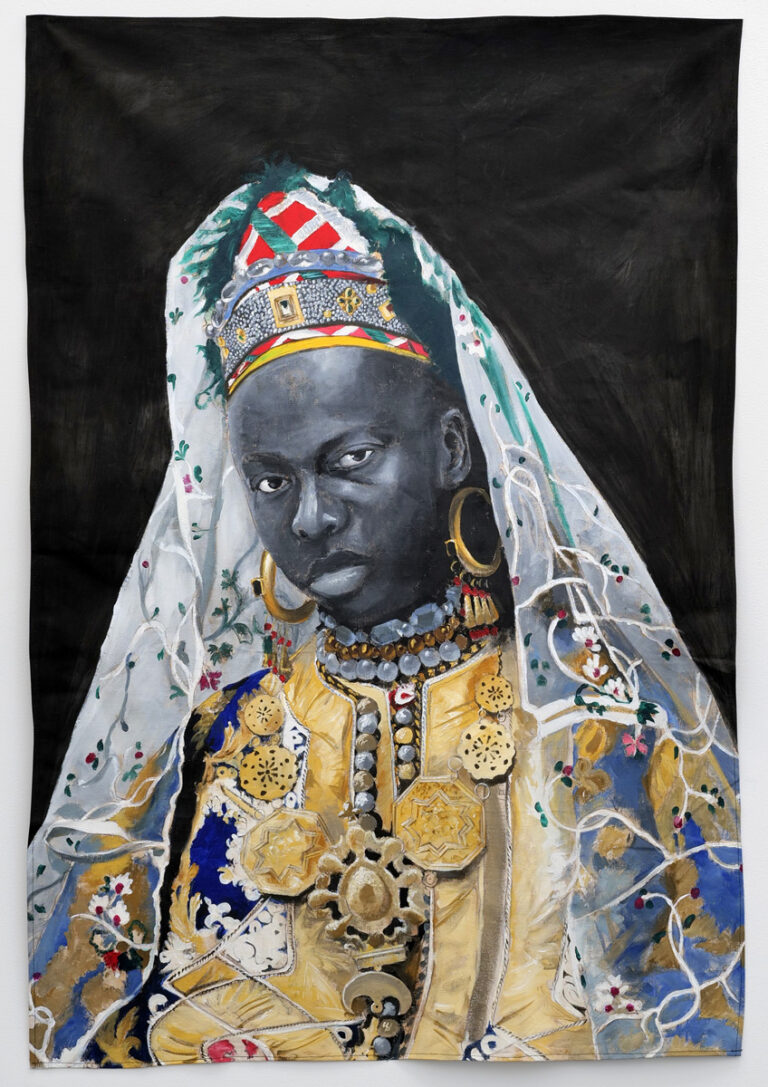
Roméo Mivekannin,
After José Tapiró y Baró, The Berber Bride, 2025,
Acrylic and elixir bath on canvas,
127 x 86 cm,
Courtesy of the artist and Galerie Barbara Thumm,
Photo: Olga Litetskaya
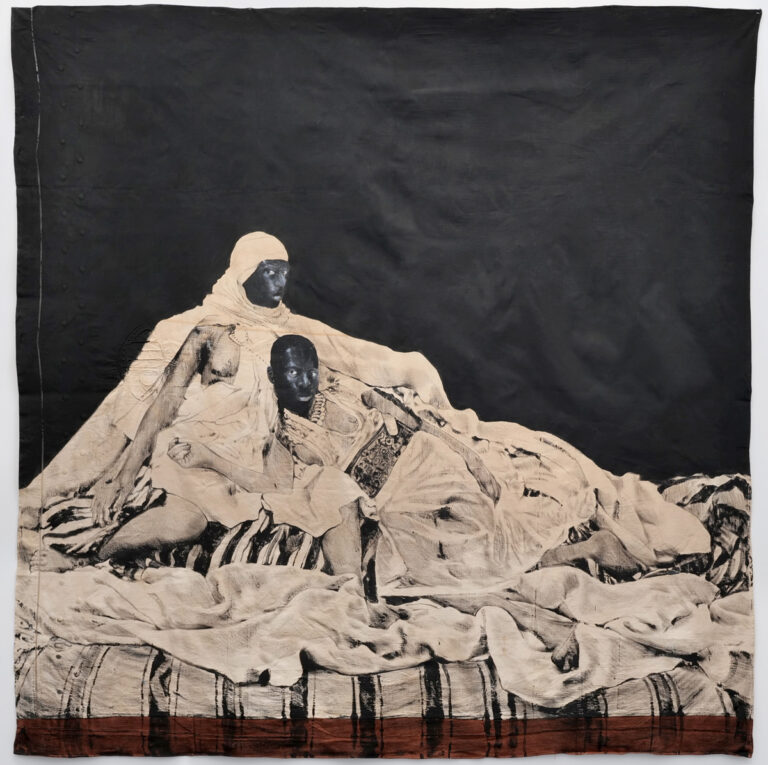
Roméo Mivekannin,
Deux Femmes Sur un Lit Dont une Est Voilée Sur le Front, 2025,
Acrylic and elixir bath on canvas,
243 x 237 cm,
Courtesy of the artist and Galerie Barbara Thumm,
Photo: Olga Litetskaya
In “Spleen” Mivekannin reexamines the works of European painters like Jean-Léon Gérôme, Jean-Étienne Liotard, and Édouard Debat-Ponsan, among others, who depicted the “Orient” through highly theatricalized scenes—harems, hammams, and other imagined settings—portraying women and subjects as eroticized objects of desire or symbols of subjugation. Much of these scenes present a supposed depiction of everyday life and others focus on domestic settings, with a strong emphasis on female nude subjects in intimate spaces on the latter. By engaging in an act of “citation” or “visual referencing,” Mivekannin meticulously reinterprets the ornate details of the original paintings, including their references to Islamic architecture, geometric patterns, floral motifs, and sumptuous textiles, and also includes the figures depicted in the scenes (mostly female). His titles always bear the term “After”, followed by the original artist’s name and the work’s title, emphasizing the inspiration for Mivekannin’s paintings but also making it clear that it “follows” the original and is not the same.
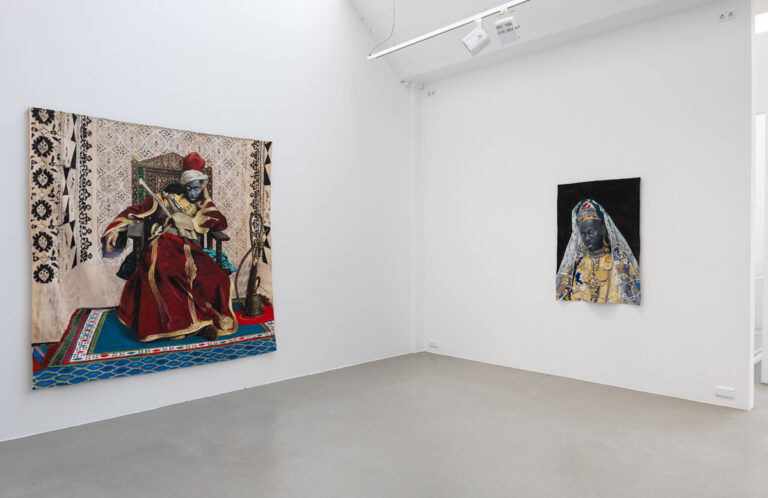
Exhibition view
Roméo Mivekannin, Spleen 2025.
Galerie Barbara Thumm,
Courtesy of the artist and Galerie Barbara Thumm,
Photo: Olga Litetskaya
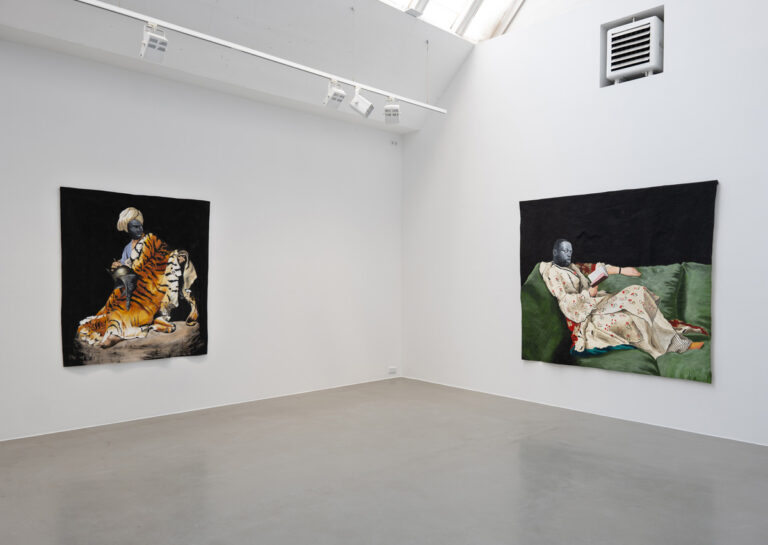
Exhibition view
Roméo Mivekannin, Spleen 2025.
Galerie Barbara Thumm,
Courtesy of the artist and Galerie Barbara Thumm,
Photo: Olga Litetskaya

